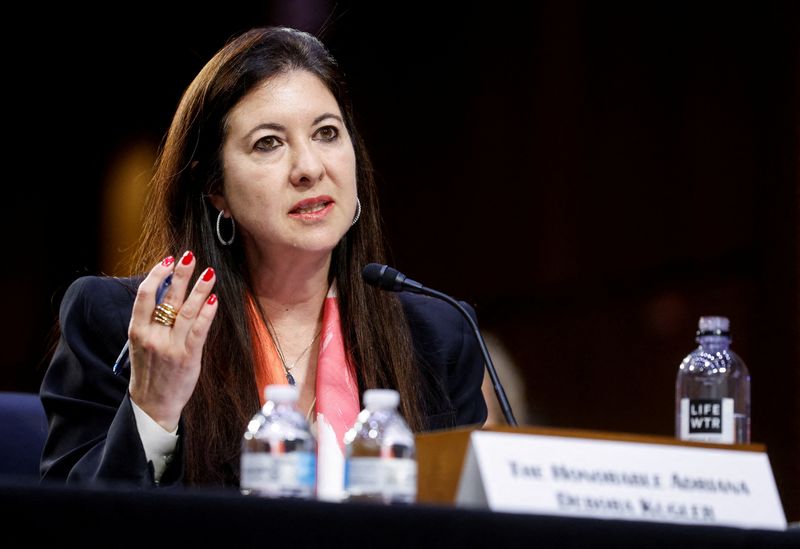
By Ann Saphir
(Reuters) -Federal Reserve officials on Friday said the U.S. job market is solid and noted the lack of clarity over how President Donald Trump’s policies will affect economic growth and still-elevated inflation, underscoring their no-rush approach to interest rate cuts.
On Friday the Labor Department reported a 4% unemployment rate last month and the addition of 143,000 jobs, a picture “consistent with a healthy labor market that is neither weakening nor showing signs of overheating,” Federal Reserve Governor Adriana Kugler said in Miami, Florida.
At the same time, she said, there is “considerable uncertainty” about the economic impact of new policy proposals, and “recent progress on inflation has been slow and uneven, and inflation remains elevated.”
U.S. inflation by the Fed’s targeted measure, the 12-month change in the personal consumption expenditures price index, ticked up toward the end of last year, measuring 2.6% in December. The Fed’s target is 2%.
“The prudent step is to hold the federal funds rate where it is for some time, given that combination of factors,” Kugler said.
A University of Michigan survey published just ahead of her speech showed consumer expectations for inflation over the next year surged a full percentage point, to 4.3% – the highest since November 2023.
Stocks fell after the morning’s data, and rate-futures traders bet the Fed would end up cutting rates just once this year, with a rising risk that it would wait to do so until the second half of the year.
NO HURRY, THEY SAY
“We don’t need to be in a hurry” is how Fed Chair Jerome Powell characterized the rate-path outlook last week, after the U.S. central bank opted to hold short-term U.S. borrowing costs steady in the 4.25%-4.50% range.
He cited disappointing progress on inflation, a strong labor market, and the need to wait for more information on what policies from the new administration will bring before responding with any rate moves.
That was before Trump announced 25% tariffs on imports from Mexico and Canada at the weekend, only to put those plans on a month-long hold on Monday, while going ahead on Tuesday with 10% tariffs on Chinese goods.
Powell may provide fresh commentary on his economic and rate-path expectations when he gives the first of his twice-yearly monetary policy reports to Congress, next Tuesday and Wednesday.
Economists typically say tariffs lift prices in the short-term but don’t change the underlying inflation trend.
Some Fed officials, however, lately have said they are worried this time could be different, particularly given that households and businesses have so recently seen how inflation can suddenly surge and may be inclined to believe it can again.


